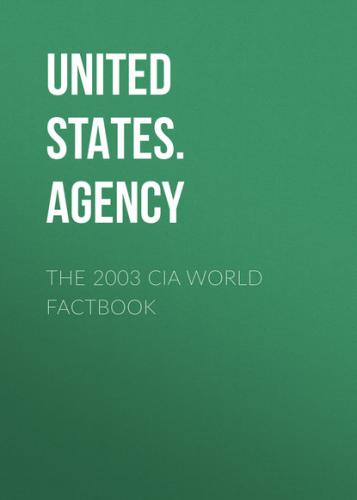IBRD, ICAO, ICC, ICFTU, ICRM, IDA, IDB, IFAD, IFC, IFRCS, IHO, ILO,
IMF, IMO, Interpol, IOC, IOM (observer), ISO, ITU, MONUC, NAM, OIC,
OPCW, OPEC, UN, UNAMSIL, UNCTAD, UNESCO, UNIDO, UNIKOM, UNMIBH,
UNMOP, UNMOT, UNOMIG, UPU, WCL, WCO, WFTU, WHO, WIPO, WMO, WToO, WTrO
Diplomatic representation in the US:
chief of mission: Ambassador SOEMADI Brotodiningrat
chancery: 2020 Massachusetts Avenue NW, Washington, DC 20036
consulate(s) general: Chicago, Houston, Los Angeles, New York, and
San Francisco
FAX: [1] (202) 775–5365
telephone: [1] (202) 775–5200
Diplomatic representation from the US:
chief of mission: Ambassador Ralph L. BOYCE
embassy: Jalan 1 Medan Merdeka Selatan 3–5, Jakarta 10110
mailing address: Unit 8129, Box 1, FPO AP 96520
telephone: [62] (21) 3435–9000
FAX: [62] (21) 385–7189
consulate(s) general: Surabaya
Flag description:
two equal horizontal bands of red (top) and white; similar to the
flag of Monaco, which is shorter; also similar to the flag of
Poland, which is white (top) and red
Economy Indonesia
Economy - overview:
Indonesia, a vast polyglot nation, faces severe economic
development problems stemming from secessionist movements and the
low level of security in the regions; the lack of reliable legal
recourse in contract disputes; corruption; weaknesses in the banking
system; and strained relations with the IMF. Investor confidence
will remain low and few new jobs will be created under these
circumstances. In November 2001, Indonesia agreed with the IMF on a
series of economic reforms in 2002, thus enabling further IMF
disbursements. Negotiations with the IMF and bilateral donors
continued in 2002. Keys to future growth remain internal reform, the
build-up of the confidence of international donors and investors,
and a strong comeback in the global economy.
GDP:
purchasing power parity - $714.2 billion (2002 est.)
GDP - real growth rate:
3.7% (2002 est.)
GDP - per capita:
purchasing power parity - $3,100 (2002 est.)
GDP - composition by sector: agriculture: 17% industry: 41% services: 42% (2001 est.)
Population below poverty line:
27% (1999)
Household income or consumption by percentage share:
lowest 10%: 4%
highest 10%: 26.7% (1999)
Distribution of family income - Gini index:
31.7 (1999)
Inflation rate (consumer prices):
11.9% (2002 est.)
Labor force:
99 million (1999)
Labor force - by occupation:
agriculture 45%, industry 16%, services 39% (1999 est.)
Unemployment rate:
10.6% (2002 est.)
Budget:
revenues: $26 billion
expenditures: $30 billion, including capital expenditures of $NA
(2000 est.)
Industries:
petroleum and natural gas; textiles, apparel, and footwear; mining,
cement, chemical fertilizers, plywood; rubber; food; tourism
Industrial production growth rate:
4.9% (2002 est.)
Electricity - production:
95.78 billion kWh (2001)
Electricity - production by source: fossil fuel: 86.9% hydro: 10.5% other: 2.5% (2001) nuclear: 0%
Electricity - consumption:
89.08 billion kWh (2001)
Electricity - exports:
0 kWh (2001)
Electricity - imports:
0 kWh (2001)
Oil - production:
1.451 million bbl/day (2001 est.)
Oil - consumption:
1.045 million bbl/day (2001 est.)
Oil - exports:
NA (2001)
Oil - imports:
NA (2001)
Oil - proved reserves:
7.083 billion bbl (37257)
Natural gas - production:
69 billion cu m (2001 est.)
Natural gas - consumption:
36.2 billion cu m (2001 est.)
Natural gas - exports:
32.8 billion cu m (2001 est.)
Natural gas - imports:
0 cu m (2001 est.)
Natural gas - proved reserves:
2.549 trillion cu m (37257)
Agriculture - products: rice, cassava (tapioca), peanuts, rubber, cocoa, coffee, palm oil, copra; poultry, beef, pork, eggs
Exports:
$52.3 billion f.o.b. (2002 est.)
Exports - commodities:
oil and gas, electrical appliances, plywood, textiles, rubber
Exports - partners:
Japan 21.1%, US 13.2%, Singapore 9.4%, South Korea 7.2%, China
5.1%, Taiwan 4.2% (2002)
Imports:
$32.1 billion f.o.b. (2002 est.)
Imports - commodities:
machinery and equipment; chemicals, fuels, foodstuffs
Imports - partners:
Japan 14.1%, Singapore 13.1%, US 8.5%, China 7.8%, South Korea
5.3%, Taiwan 5.1%, Australia 5.1% (2002)
Debt - external:
$131 billion (2002 est.)
Economic aid - recipient:
$43 billion from IMF program and other official external financing
(1997–2000)
Currency:
Indonesian rupiah (IDR)
Currency code:
IDR
Exchange rates:
Indonesian rupiahs per US dollar - 9,311.19 (2002), 10,260.8
(2001), 8,421.77 (2000), 7,855.15 (1999),
